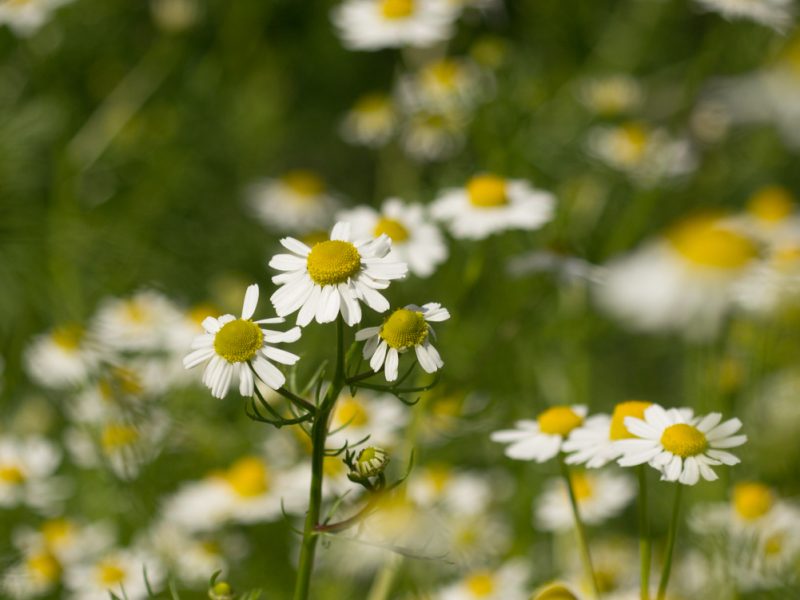What is stratification and how is it done?
In simple terms, stratification is the process by which we mimic the natural conditions that help break the ‘dormancy’ of a seed so that it germinates at the time of year it is most likely to survive.
Seed dormancy is nature’s way of delaying germination, either to survive extreme conditions (normally heat or cold), or to increase chances of wider seed dispersal. It is a large and fascinating subject, but we will stick to what is relevant for growing herbs in temperate climates.
Let’s take meadowsweet as an example – a common herb that grows throughout the UK, often in damp ditches that flood in the winter. Meadowsweet’s seed matures in September and starts falling off the plants in November. If the seeds were to germinate in the autumn, the young seedlings would have to cope with extreme cold and wet, very short days and little sunlight – standing little chance of survival. For this reason, the seed becomes dormant, and will only wake up from its dormancy when certain conditions are met.
As herb growers, our challenge is to mimic the natural conditions that break the seed’s dormancy. There are two main ways of doing this: cold-moist stratification and scarification.
Cold-moist Stratification
This is the process by which we mimic the cold and wet conditions of a temperate winter. There are two main ways to do this; the first method is to sow seed outdoors in the autumn or early winter, and to keep it exposed to the winter conditions until it germinates in the Spring. The second method is to mix seed with a small amount of sand, compost or coconut coir and keep it in the fridge for a period of time; a couple of weeks can be enough, but for best results you should aim for at least a month. This means you need to work backwards from mid-spring and should ideally be stratifying by mid to end-February. If you miss this window, don’t worry – you can still stratify your seed to sow later in the Spring.
At Earthsong Seeds we generally prefer to stratify in the fridge; here’s how we do it:
- Gather all your ingredients (see photo).
- Put your seeds in the bag.
- Pour some sand into the bag (a teaspoon is enough for small seed; a few teaspoons may be needed for bigger seed).
- Spray water into the bag and mix it all around. 2-3 sprays should be enough. The sand or compost should be moist, not wet. Squeeze out excess water if needed.
- Label your bag with the name and quantity of the seed, and the date stratified. Add a reminder to sow the seed!
- Put in fridge (and hide behind the old jars of jam if there is resistance from family members). And if you are the forgetful type then maybe set a reminder in your diary of when to sow the seeds.
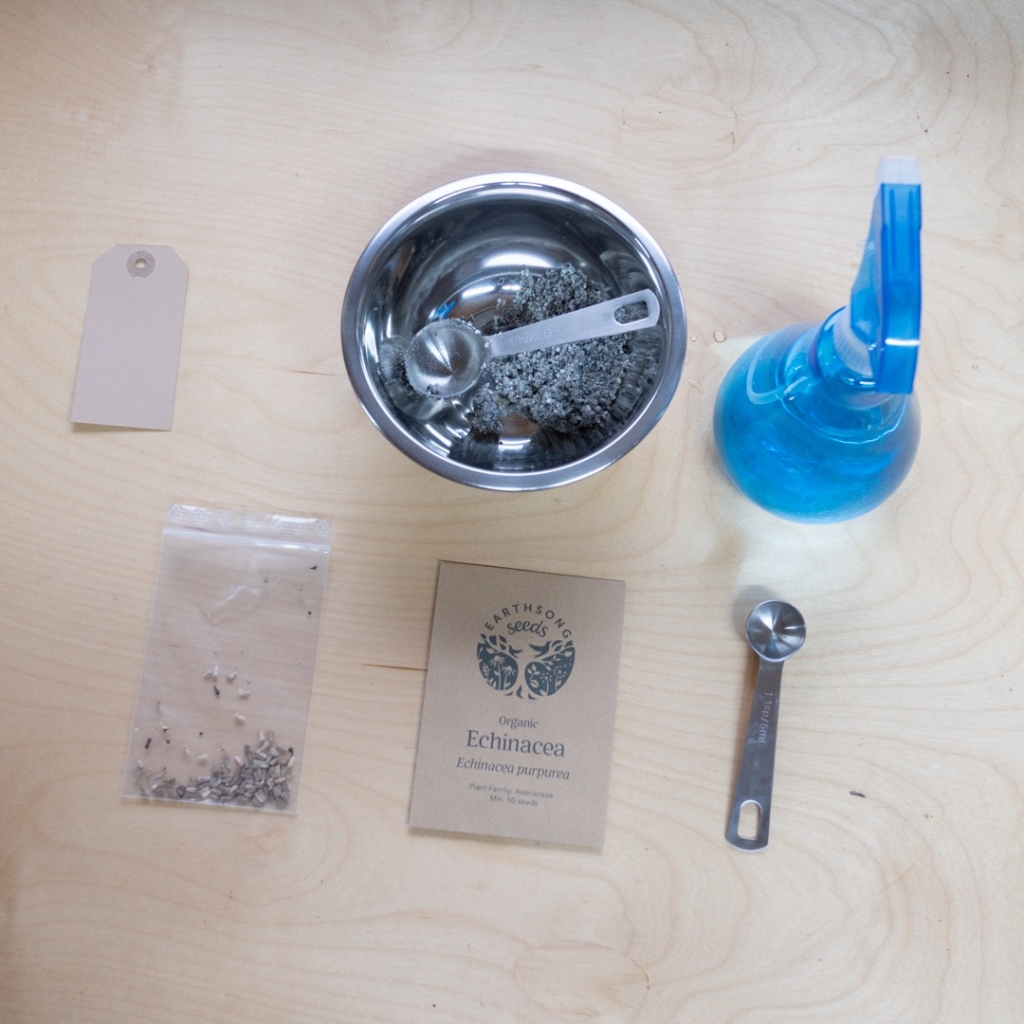
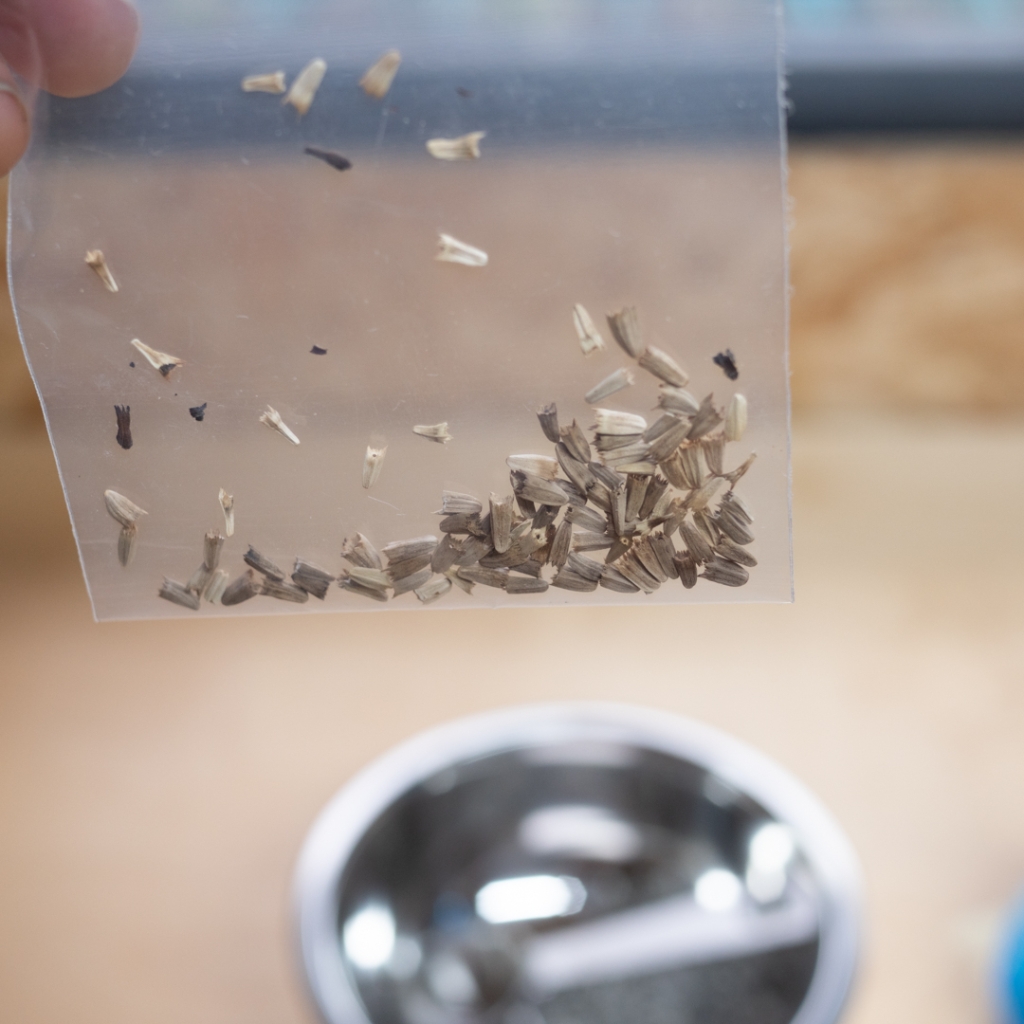

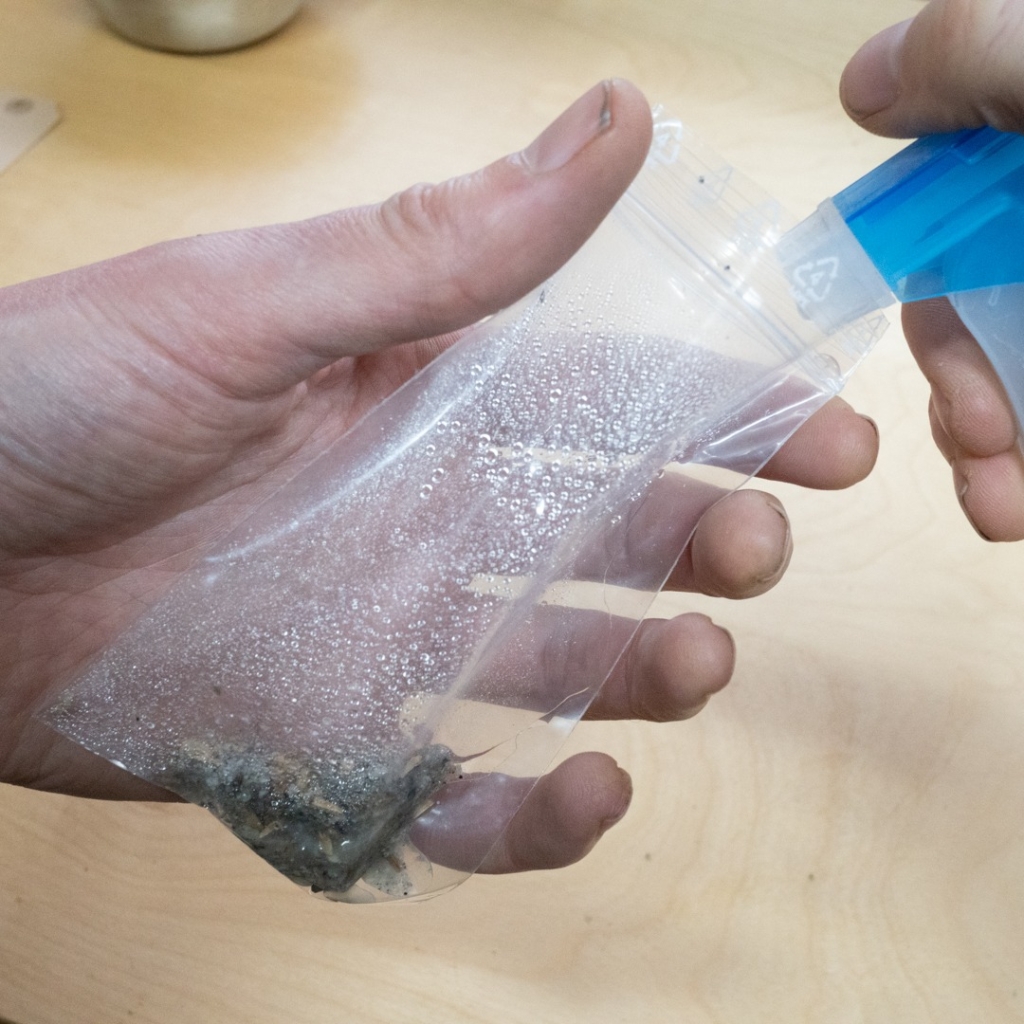

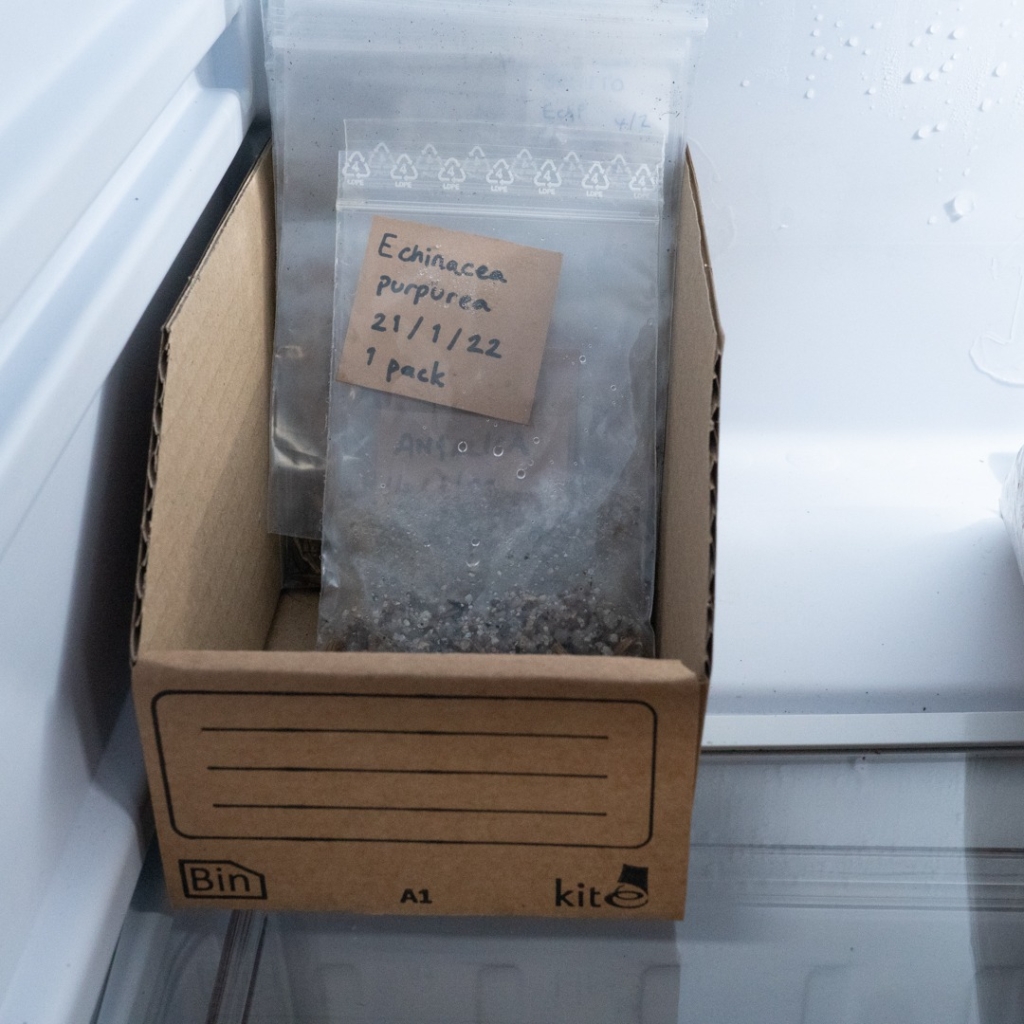
Scarification through Abrasion
This is the process by which the hard seed coat of a seed is broken down, allowing water to be more easily absorbed by the seed. This can be done by rubbing seed on sandpaper or a file, or in some cases they can be nicked with a knife. Rubbing with sandpaper is a fiddly job and often results in seeds flying all over the place so it can be helpful to do it in a large pan, bucket or rug.
Scarification through Soaking
Another method of scarification is to soak the seed in water for a period of time before sowing, which softens the seed coat, again helping the seed to absorb water more easily. We use these method for our leguminous seeds such as licorice and astrgalus, soaking them for 24 hours before sowing, usually with very good results.
Stratification Experiments?
Every year we do a few different experiments to see how different stratification methods affect germination. For example, in the experiment below we sowed meadowsweet seeds that had been cold-moist stratified in the fridge for a month before sowing (tray on left) and meadowsweet seeds that hadn’t been stratified (tray on right). Sometimes stratification speeds up germination time with non-stratified seed eventually catching up, but in this case only one seed germinated in the tray of non-stratified seed, and there was a very good germination rate in the tray of stratified seed.
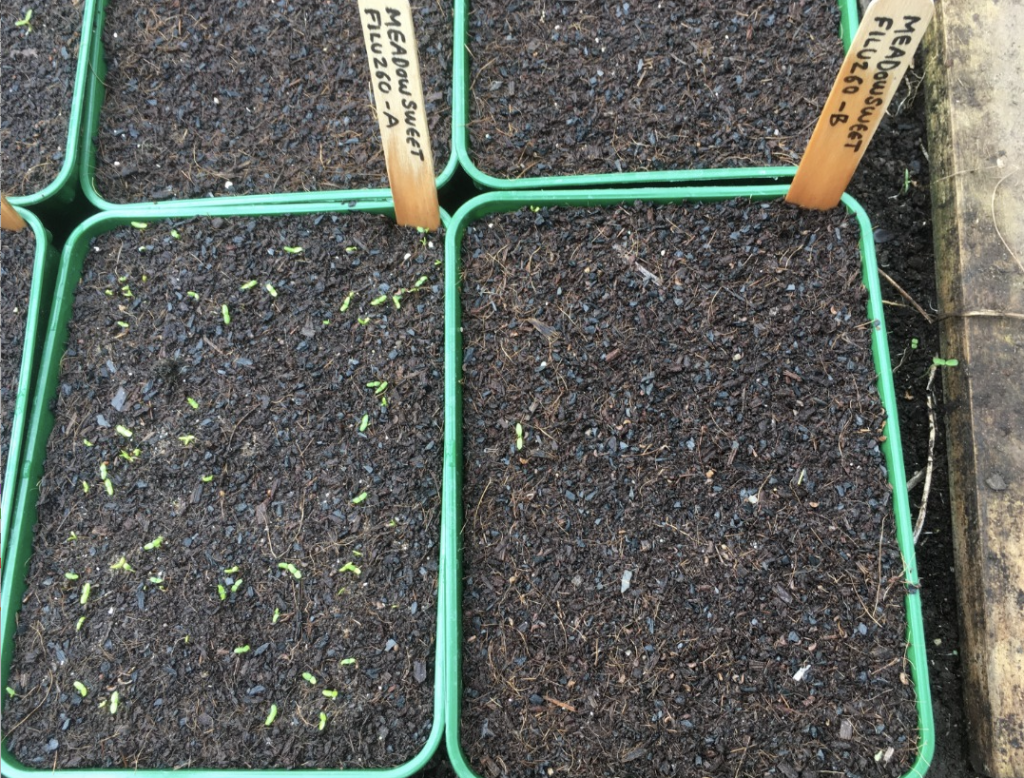
Which herb seeds need stratification?
Below is a list of which of our herb seeds benefit from stratification or scarification. Please note that we have compiled this list based primarily on the results of our own experiments and that it may differ to other sources of information on the Internet. Our experiments are ongoing and we will update this list as and when we can.
Cold-moist stratification highly recommended:
– Angelica
– Arnica, Meadow
– Meadowsweet
– Motherwort
– Vervain, Blue
– Vervain, European
Cold-moist stratification improves germination, but is not essential:
– Culvers root
– Echinacea angustifolia
– Echinacea purpurea
– Echinacea pallida
– Gentian, Tibetan
– Henbane
– Horehound, White
– Marshmallow
Scarification recommended:
– Lavender
– Pokeroot (this often self-seeds in different parts of the garden having been scarified in the gut of a bird!)
Soaking recommended:
– Astragalus
– Licorice
How to sow stratified seeds?
One thing you do need to be aware of when sowing stratified seeds is that it is very hard to separate individual seeds once they have been mixed in a damp medium, which means that it becomes very difficult to sow seed in individual plugs. So for this reason we recommend sowing stratified seeds into open trays and spreading the sandy/soily mix as evenly as you can on the surface of the tray. You can read more about what to sow your seeds in here.

